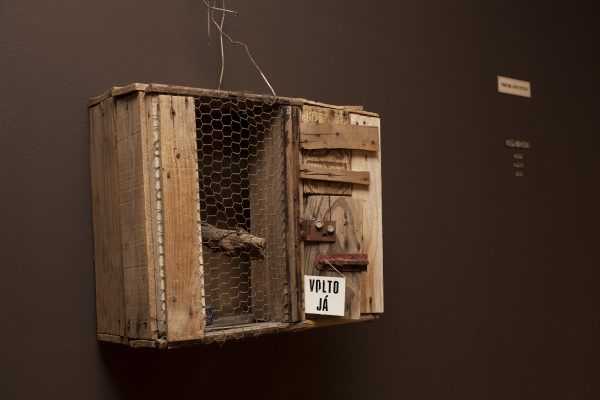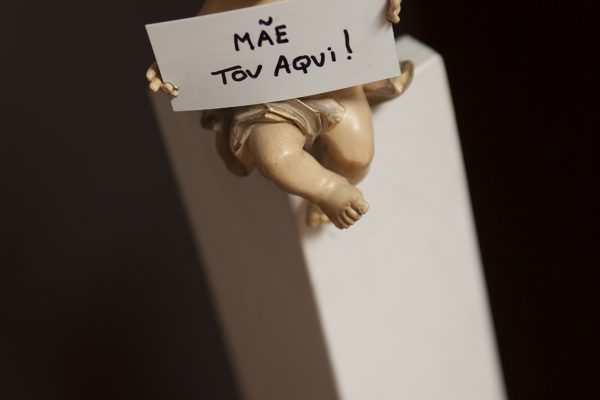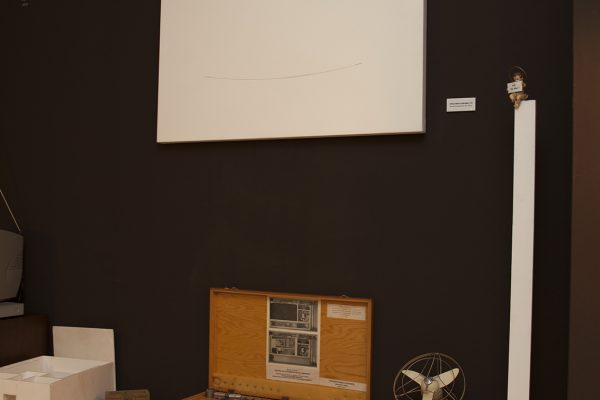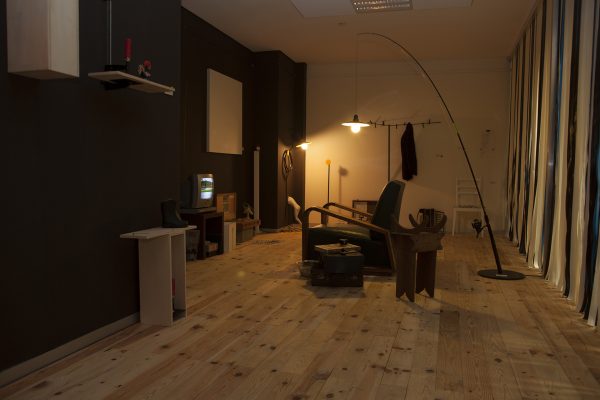[exposicoes show=”menu”]
[exposicoes show=”list”]
NUNO VASA | o jogo possível
The Edge Arts brought together for the first time in the same exhibition space a set of works produced by Nuno Vasa between 2003 and 2012. Rather than provide a retrospective approach to the work done during the last decade, this selection offered the visitor an approximation to a path that has been characterized by the recurrence of thematic issues that run through the work of the artist, but also by the fact that it is somewhat difficult to find one unifying definition for Vasa’s work.
Sculpture, performance, painting, video and design were diluted in an artistic journey that show us how the artist sees and thinks about himself and others. The distinct nucleus of the exhibition which have been curated by Felisa Perez and Nuno Vasa for the Edge Arts’ opening, converged in one space / time – the observer’s. This is the frontier where the work of Vasa seems to dwell – no man’s land, indefinable, which separates what is life from what is art. The work of Nuno Vasa has this ability to unfold a reality, perceptible immediately, into a multitude of alternatives to this very reality, a game in which the visitor is essential not only to the realization of potential significance, but also as the “mechanical” activation of some pieces.
A clear example of this commitment that seems to exist between the projects of Nuno Vasa and those who participate in them, something that we can interpret as a clear call to action is “Cinema” (2004 / collection António Gomes de Pinho), in which the interaction of the visitor with the work reveals the mechanism that gives rise to the “trompe d’oeil” that animates our illusion. The interaction of the observer is also used in “Autorretrato” (2005), a piece which plays with the idea of a possibility of infinitely plural meaning. This allows the realization of one’s senses to be experienced only in the observer’s physical presence , himself the sine qua non of his own individual perception of the artistic material.
This game which the artist develops with the body of the viewer can be seen in a less obvious way in other works such as “O Peso Afeta a Linha Reta” (2005), “If I Knew You Were Coming I’d Have Painted Myself” (2005 / Collection Comunidad de Madrid) or “Loading images “(2006). Vasa’s aesthetic approach can be characterized as “coldness” or “minimalism”. His work requires from the viewer a relationship of involvement, a sense of commitment which works only after diving into empty space, which then immediately reveals the superficiality of expression. This interaction that awakens an awareness of gameplay between spectator, art and artist, a relationship which can be observed in plays such as “Kiss Me With Red Lips And I’ll Never Be The Same” (2006) or the series “Game Over” (in development).
“Jantar Possível II” (2003), “Casa de Contar Segredos” (2004) and “Solitária” (2004) are sculptures that seek to portray the balance established between man, the other and their common experience. They are pieces that gain a new reality daily. They are devices which have been developed by Nuno Vasa as another dimension that should be added to the «dominant direction» (João Lima Pinharanda) that characterizes his work and which recently earned him an POPs award – Original Portuguese Design, sponsored by the Serralves Foundation (with pieces “Clip Books” and “Estendal”).
“Oficina” (2012), developed as site specific for the Edge Arts space is the piece that takes the visitor out of this time / space itself, to put him or her in direct relation to the time / space of another. The facility serves as a staging of intimacy. It is a recreation of the private space of Nuno Vasa, which, through several indicators, a set of clues and biographical fragments, present, past and future merge. He materializes the tension between what is public space and what is the private space of each person, reinforcing the idea that art lives on pedestals.
Nuno Vasa’s work is moving away from the “isms”, surviving and integrating into a dimension that is very much his own. This set of his works seeks essentially to produce a dialogue between the reality of human experience and its meaning, which, in formal and collective terms, is lived as artistic product. This is the great challenge for the artist who finds in the game of chance a path for his expression which is nothing more than walking in the direction of a constant encounter with the other.
Mário Verino Rosado, 2012



































